Do you want to be better at ping pong? Getting better at ping pong will need a lot of mental and physical effort with the right techniques and practice. Sometimes it needs practice alone or with a partner who might support you by telling you the ways to control your shots or speed up to return the ball.
I know that a lot of people have a hard time getting the hang of it. I’ve been playing for almost 10 years and here are some tips from my experience.
After playing experience of these years, I am going to show you how to get better at ping pong.
This is one of my favorite tips for beginners because it makes the most difference if you are new to the game.
Let’s Jump in!
Or before going to the next part you need to go through how to play ping pong if you are a complete beginner or know the basic rules of ping pong first.
How to get better at ping pong and 14 step by step guide to follow
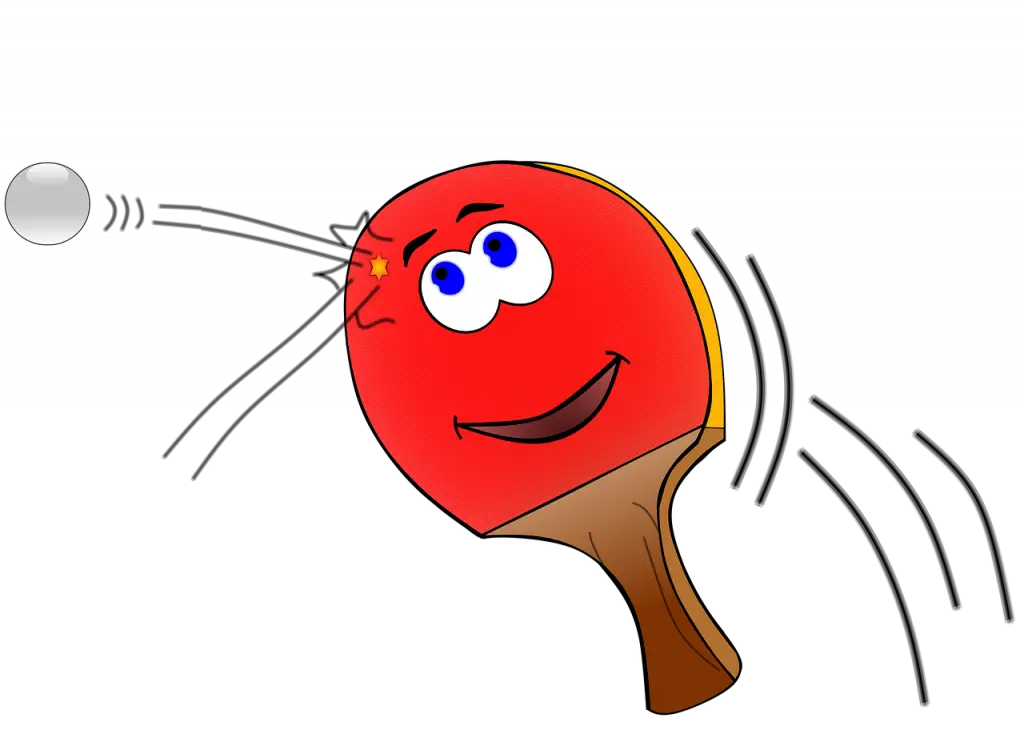
1. Don’t get discouraged
It is going to take time and effort before you see improvement, but don’t give up! When I first started playing I would play against a wall or stand in a corner of the room with my racket and a ball, hitting back and forth between me and the wall or floor. I almost felt silly but it was a great way for me to practice.
2. Know what spin is on the ball
The key to acquiring this important skill in table tennis is watching your opponent’s racket closely when they hit it.
If you see any of these moves:
- topspin off the bottom left corner;
- backspin on the top right side;
sidespins going from one direction then another (right-left), chances are good that there will be some kind of trajectory confusion and poor placement as well!
The thing about looking into an opponents’ strokes early enough before contact happens can give us valuable clues for future games with them because now not only do I know what type of shot he wants me—but where exactly that likely land after taking my swing at him/her?
3. Get a racquet
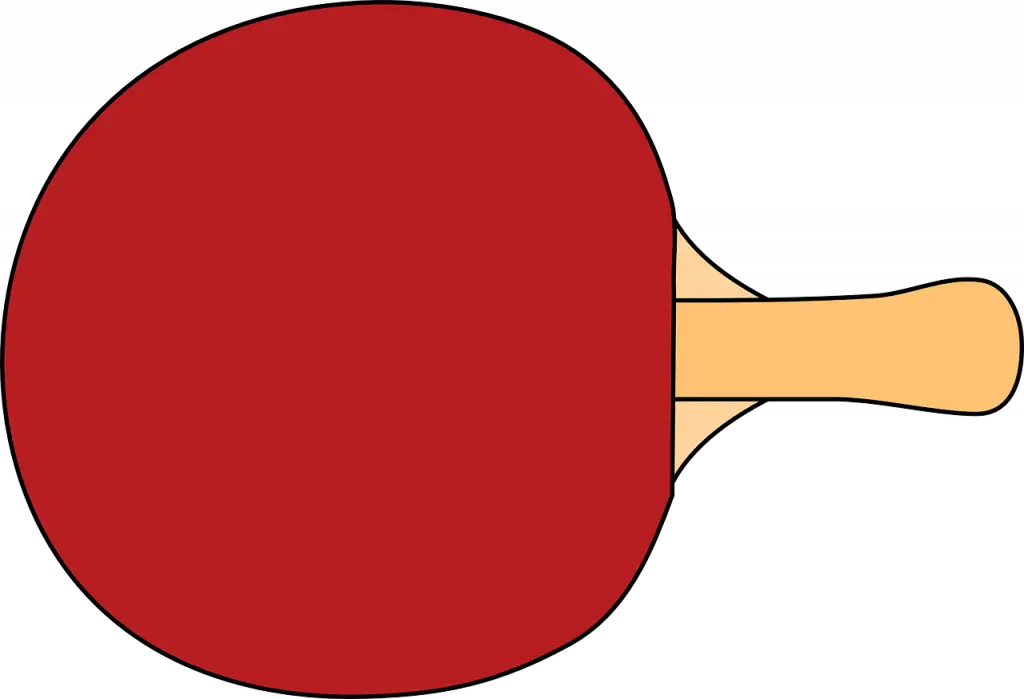
Get a perfect paddle for your comfort from somewhere like Tennis Warehouse. The racquet will make all the difference because you want one that is going to be comfortable.
If you are thinking about buying a racquet, pick up the one you want to buy and swing it around. If it is really heavy or really light for its size, pass on that one.
You don’t want to get any tennis elbow because of bad equipment.
4. Compensate for the spin with your racket angle
Adjust how you grip your racket to create different spins.
If topspin, angle the leading face down past its center point and make contact with an upwards stroke;
Backspin has a similarly angled bottom side up so that it can be contacted on the downward swing for negative tension or redirecting balls off-course
Right sidespin angling left results in approaching strokes designed as lean slightly towards the right while contacting above the midline.
But reaching far forward enough into the net before lifting upwardly after making passage through a thick layer of air below the tennis umbrella canopy (to increase volleys).
The left-sided player should do the opposite since they’re looking at serving high percentage shots by playing close
5. Maintain a good ready position

A good ready position is a balance point for your body.
It allows you to move easily in any direction, and can be used when returning serves or between strokes of the match.
The basic sequence on both offense and defense is to put yourself into this balanced state (with feet together), then move towards the ball while staying on guard with what’s coming next.
Stroke it off your opponent then return back into that same balancing act until there are no more points left!
6. Find a partner
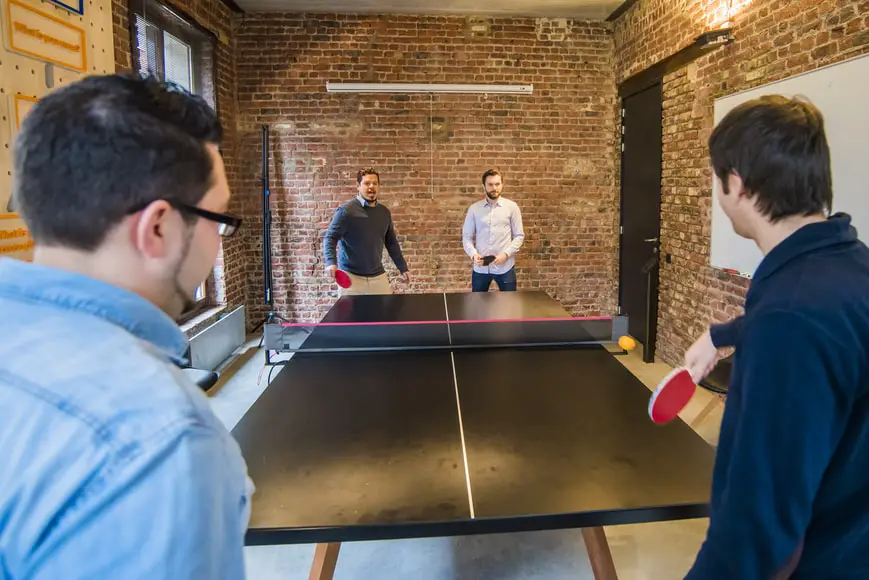
Find a partner to practice with. I know a lot of people who play don’t have a partner to practice with, but find someone!
If you can’t find anybody to play with for free, then there are local clubs that offer lessons and group play.
7. Learn from others
If there are people better than you, ask them how they got that good. Then listen to them and practice what you learned from their advice after asking.
8. Use your whole body when you stroke your forehand
The more you can coordinate your hips and shoulders, the easier it will be to produce force.
When hitting a tennis ball with this technique for power or placement purposes, make sure that both are moving backward while swinging forward- otherwise known as backswing acceleration!
If using only one arm is limiting consistency in either of these areas then find new ways around it by doing Hindu Squats at home before every match (3 sets x 10 reps).
9. Stay Hydrated
This is one I realized about two months ago. I was playing in a tournament and it was the middle of the summer.
I was really thirsty because I had been drinking water throughout the morning, but when we started playing at 10, I didn’t have anything to drink so my throat became dry halfway through.
Developing this habit will ensure you are always ready to play even if your opponent isn’t taking breaks.
10. Develop sidespin serves
Sidespin, the act of spinning your paddle so that its blade points away from you and towards an opponent at a 45-degree angle has been widely used in table tennis for centuries.
This hidden weapon can be combined with either topspins or backspins to deliver devastating serves into deep areas close by the net where returning shots are hard due to less bounce time available before hitting their intended target-the other player’s racket handle!
It’s important not only to use sidespin when serving but also take care how high up on yourself allow this extra momentum because low flat balls have more chances than conventional ones do against strong returns
11. Takes break
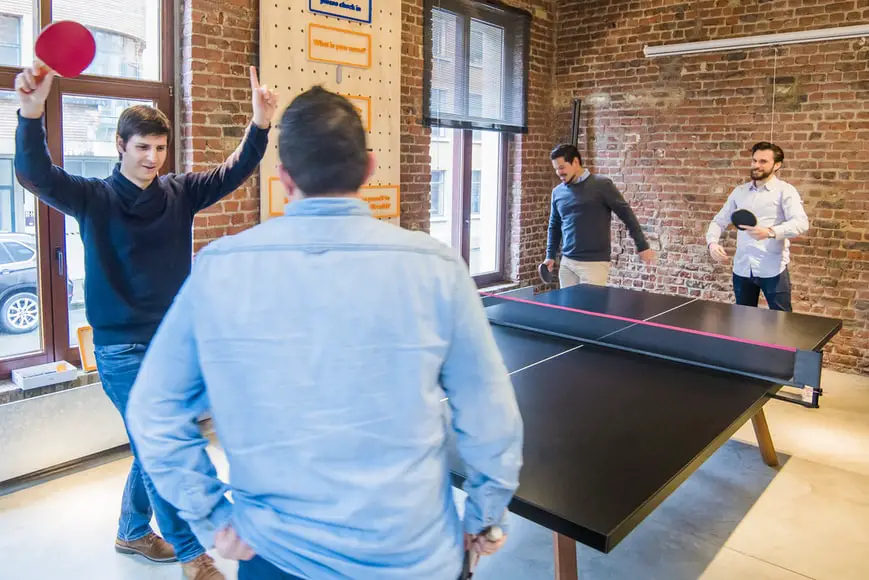
When you are playing against someone else, take breaks in between games. Even if you aren’t thirsty or tired, I recommend taking a brief one-minute break before the second game begins.
Nothing good happens when you get super dehydrated or exhausted by your play.
12. Practice makes perfect
Keep practicing. Like I mentioned earlier, it will take some time for you to truly develop your ping pong skills. The more you practice, the better player you’ll be.
13. Have fun
This came second to last because while it is important to take your playing seriously, you need to make sure that you are having fun too.
I’ve heard of people who take it so seriously that they get really upset when they lose. That is not good for your health.
14. Keep your returns low over the net
The lower you place your shots, the less angle your opponent can use and the harder it will be for them to hit it with power. There is one exception to this rule, however- lobs!
Lobs allow players who are not as close by at an appropriate distance from where they think someone might drop their ball into play so that way there’s room under control if needed before ultimately throwing or hitting back over the top of themselves
In general, when placing balls overhead (generally speaking), try putting down low areas first because these offer the fewest angles through which opponents could attempt striking our own throws causing us difficulty in getting off clean strikes ourselves.
Can you practice ping pong alone?
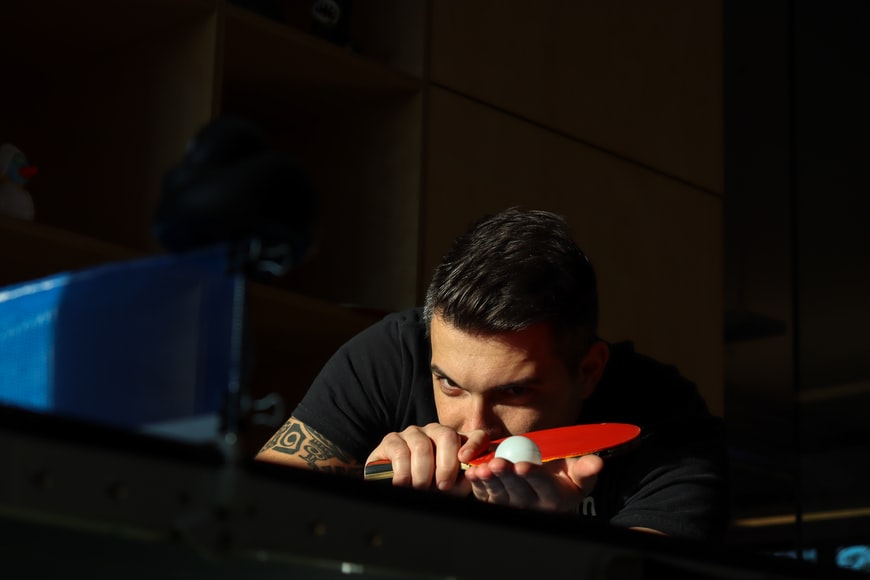
Ping pong is a fun sport to play alone.
It’s also a great way to exercise your body and mind. If you’re going at it solo, here are some tips for playing ping pong:
- First of all, be sure you have enough room so that the ball doesn’t keep hitting the wall behind you.
- The next key thing is to make sure no one will walk in on your session without knocking first.
- Finally, if possible, find an outside space where there isn’t too much traffic or wind blowing around because these can both distract you from what needs to happen.
You should also make sure the ball doesn’t get stuck anywhere. This could be bad for you and your game because if it takes too long to unstick the ball, you might get tired of waiting and quit out.
Practice these tips before your next solo ping pong session to improve your skills!
How do you win at ping pong every time?
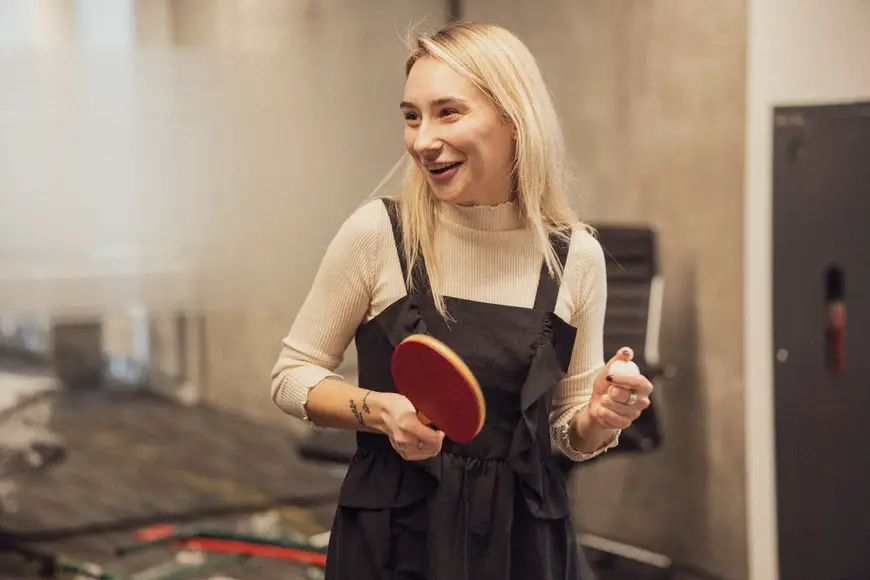
Ping pong is the perfect game for those who are too busy to play. It can be played almost anywhere, with just a table and some paddles. It is also one of the most social sports out there.
So what do you need to know in order to win at ping pong?
You’ll want to develop your racket skills first by practicing against an imaginary opponent or by playing against someone who doesn’t mind losing all the time (a sibling perhaps).
And don’t forget about footwork – without quick feet, you’ll never get away from your opponent, no matter how good your shot selection may be!
The same goes for hand-eye coordination – without it, every ball will come back at you full force (this could be considered good practice in its own right).
Once you’ve mastered the basics, you’ll want to work on timing. Timing is key in all sports, and it’s especially important when playing ping pong.
To practice your timing, set up a clock with second-markers (it should have at least five but no more than fifteen minutes on it).
Have an opponent serve the ball to you every second, or have a friend stand behind you and call out when to hit.
As you get better at this drill, your focus will turn from anticipating where the ball is going to deciding when to strike!
The next thing to work on is strategy. It’s never good enough to have good skills – you need to work on managing the ball effectively by predicting where your opponent is going to hit it.
If you do this, your shots will be much more effective because your opponent won’t be able to keep up with the quick pace of the game!
How do you hit a good ping pong shot?
Ping pong is a fun, fast-paced game anyone can enjoy. And did you know that ping pong even has its own professional players?
Yes, there are lots of opportunities to play ping pong! Now it’s time for the big question. How do you hit a good ping pong shot?
I wanted to find out how some of the pros do it, so I went to ask some.
The first player I talked to is called Tomikazu Harimoto. He’s 33 years old and lives in Tokyo.
Ping pong is his job, but he still likes playing for fun with his friends. “I like how easy it is to play anywhere you go,” he says”.
You don’t need too many players either. But I think the most important thing is how you hit the ball. You have to keep practicing!”
The next player is Ng Hui Ern, who lives in Singapore. She’s 21 years old and started playing ping pong when she was just 3-years-old.
She’s very good! When I ask her about the best way to play, she says you have to decide what kind of game you’re going for first.
Are you playing for fun or are you playing to win? Well, if it’s just for fun then go ahead and hit hard! That’ll be super fun!
Can a player hit the ball before it bounces in table tennis?
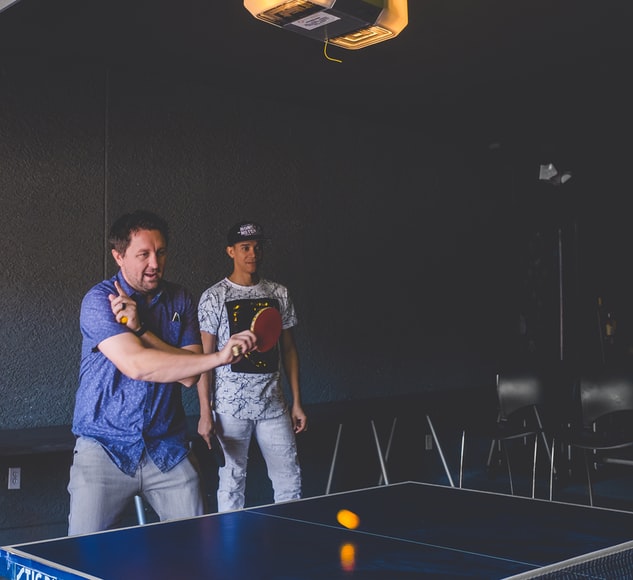
Any contact with the ball before it bounces is a foul.” This rule in table tennis is not as straightforward as it may seem.
As long as the ball has yet to bounce, any player can hit it—but doing so risks committing what’s known as “double bouncing.”
Double bouncing occurs when the server hits the ball and then lets go before it touches anything else.
If this happens, he or she loses their turn. The server also risks another type of foul: if they hit the net on their first bounce (or let go of the ball), that too is considered a double bounce.
If neither party commits either infraction during play, then both players are free to continue hitting until one person misses.
How long does it take to get good at table tennis?
It is difficult to answer this question. It would depend on how often you practice, and when you start playing table tennis for the first time.
If someone starts at the age of 14, they could be a pro in 5 years or so. But if they start at an older age say 30-40 it might take them 10 years to get good at table tennis. There is no way to know unless you try!
I haven’t played for over 20 years, but I remember it took me about a year to get good at table tennis. In that time I practiced every day and made sure I was getting better all the time.
As long as you can maintain your improvement then you will continue becoming better.
I remember when I was about 10 years old. My friend started playing table tennis and I tried it too, but I wasn’t very good at it.
Eventually, I got better, and that was because my friend believed in me. He helped me to become good by encouraging me all the time!
It’s great if you have support from someone else because it allows you to stay focused and be motivated. I ended up getting good at table tennis, but it took me a long time!
However, if you want to get good at table tennis, the key point is to practice. Once you start playing regularly then it will become easier for you to improve yourself. You just need time!
Conclusion
There is a lot of information here for you, but the main thing I want you to take away from this article is that it will take effort if you really want to get better at ping pong.
You have some great resources available to you, use them! To become a better ping pong player I recommend that you follow these tips.
If you truly get benefited from this information about how to get better at ping pong, share it with your loved ones who are trying to do well at ping pong as well.

Hi, My name is Benjamin Fink and I am the author of the ping pong reviewed blog. I am a sports person learning and sharing my knowledge with others about ping pong and other sports.
I have been playing ping pong for the last 17 years and teaching people about the game and writing new things about the game through this blog When finding something new. I have participated in serious ping pong tournaments in my country.
